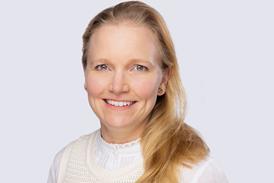The Crown court service intends to achieve at least 105,000 sitting days in 2021-22 and hopes to introduce extended operating hours as the criminal case backlog nears 60,000 cases.
According to HM Courts & Tribunals Service’s annual report, the lord chancellor ‘wants to sit a record number of sitting days, alongside extending court hours, continuing the current Crown court Nightingales beyond June 2021 and potentially extending them further’. Extended court and tribunal operating hours will include evenings and weekends to 'make more use of the space'.
In 2020-21, the Crown court sat for 67,209 days. HMCTS is now looking to sit at least 105,000 days in 2021-22, subject to social distancing requirements. This would reverse the fall in seating allocations in recent years, from 97,400 in 2018/19 to 82,300 in 2019/20.

The court service has also pledged to acquire new premises and replacement premises when leases expire. In Hull, Leeds, Dundee, Medway, and Watford, for example – where leases are due to end – it said it will find replacement space either by integration within the existing estate or re-provision.
According to HMCTS’ annual accounts, the reduction in the number of sittings over the past year and the suspension of enforcement activities resulted in a reduction in gross fee income of £197 million, to £563, 202. Meanwhile, the service’s net expenditure rose to £1.5bn, including £105 million of additional resource funding to support Covid-19 recovery. In 2019-2020, it stood at £1.2bn.
Yesterday, HMCTS confirmed that some Covid measures will remain in court buildings despite the removal of restrictions this week, saying that changes will be managed in a 'steady, careful way'.
Kevin Sadler, acting chief executive, said the service is working with the judiciary to safely increase capacity, meaning the number of people in court buildings will ‘gradually increase’. This will happen alongside continued use of audio and video technology to enable remote attendance, he said.


























13 Readers' comments